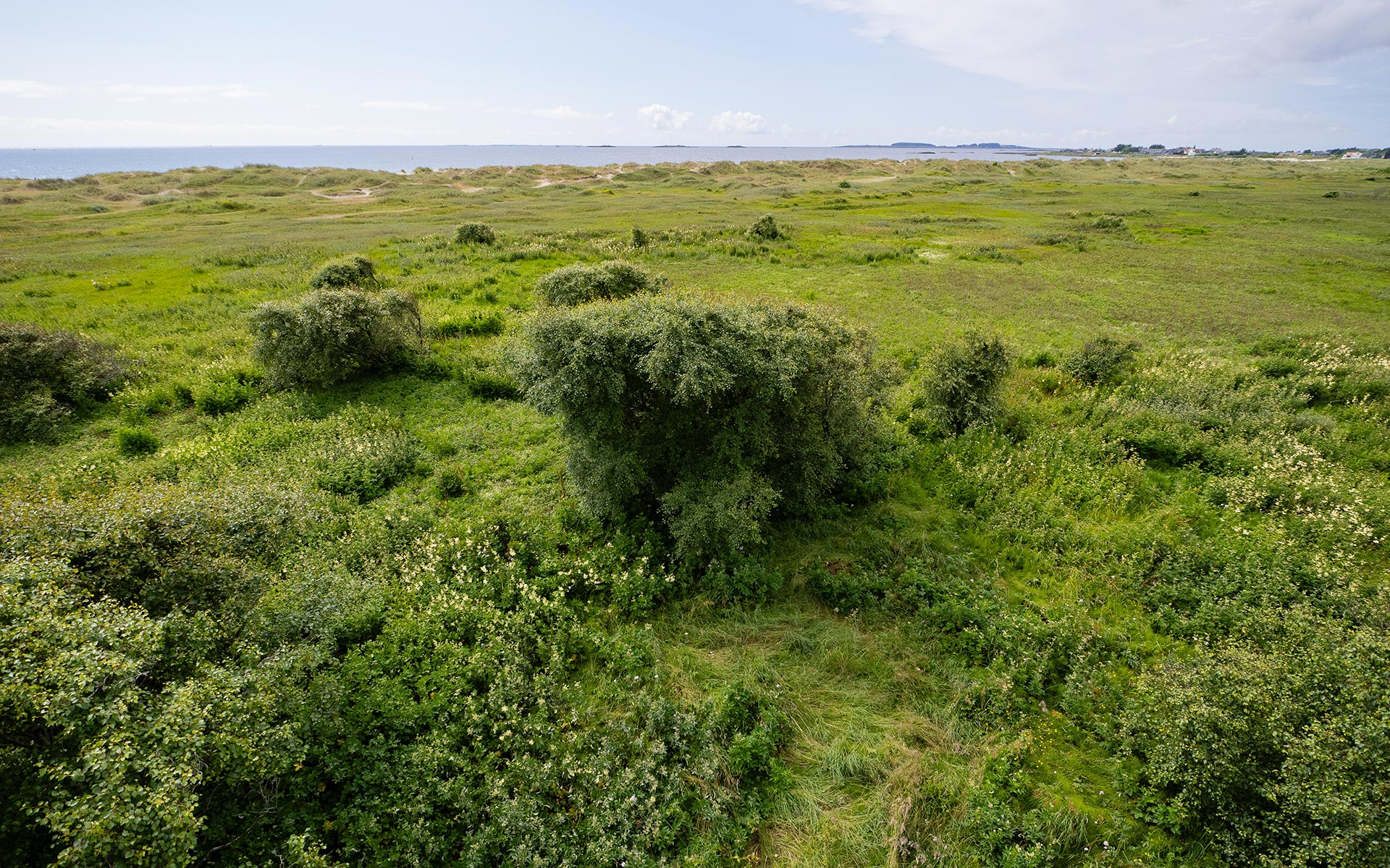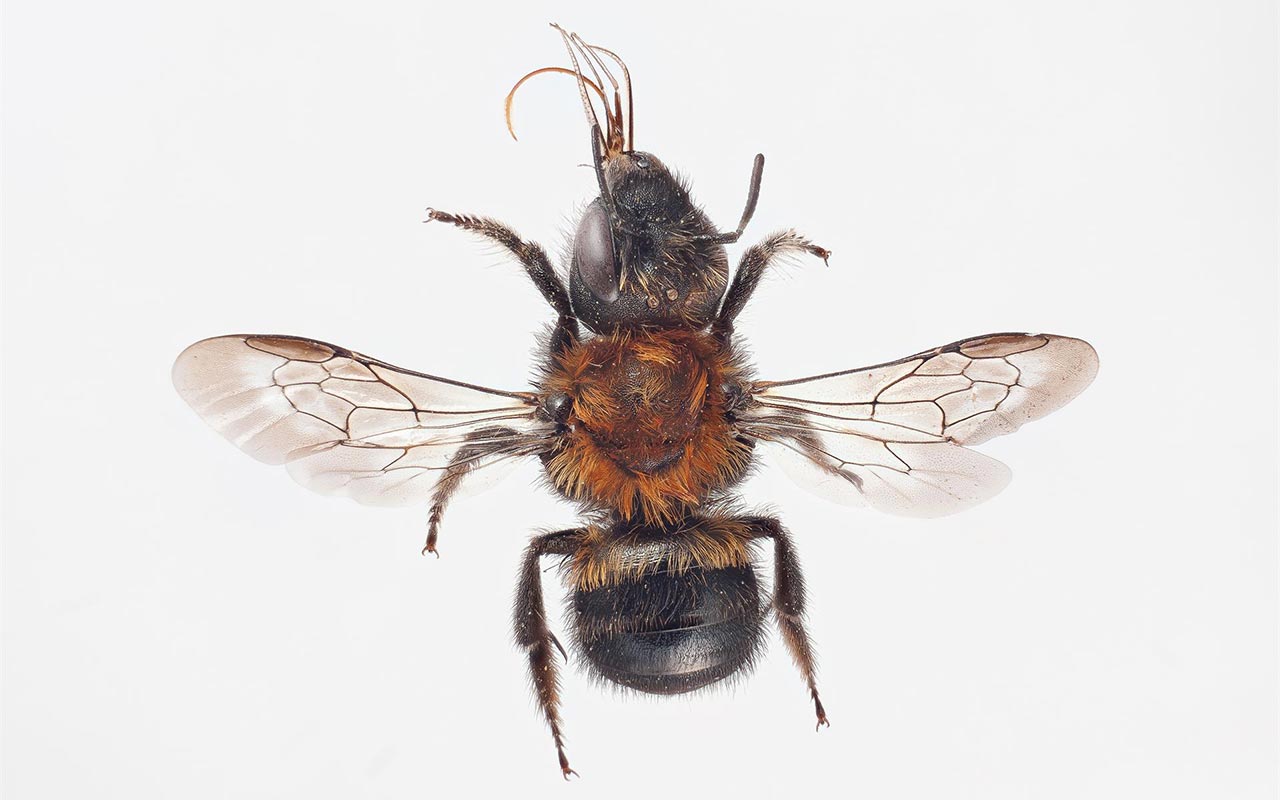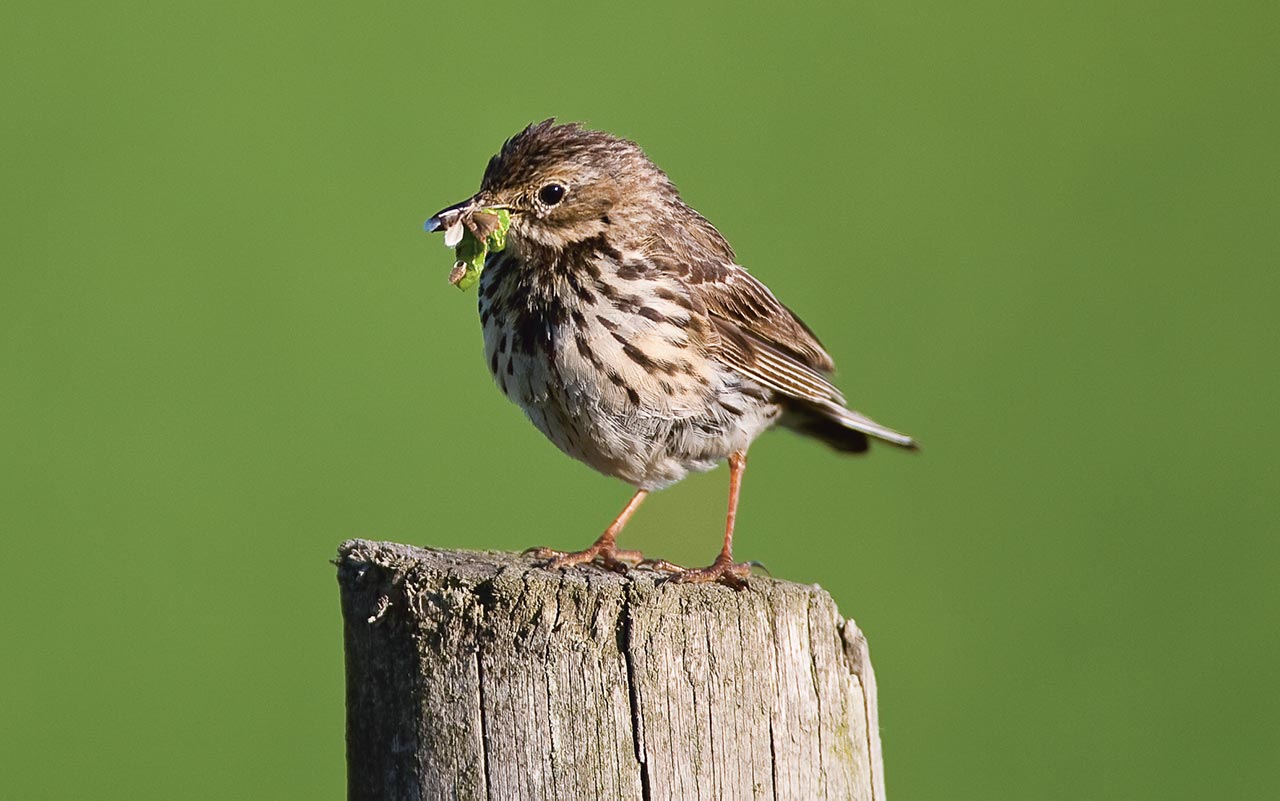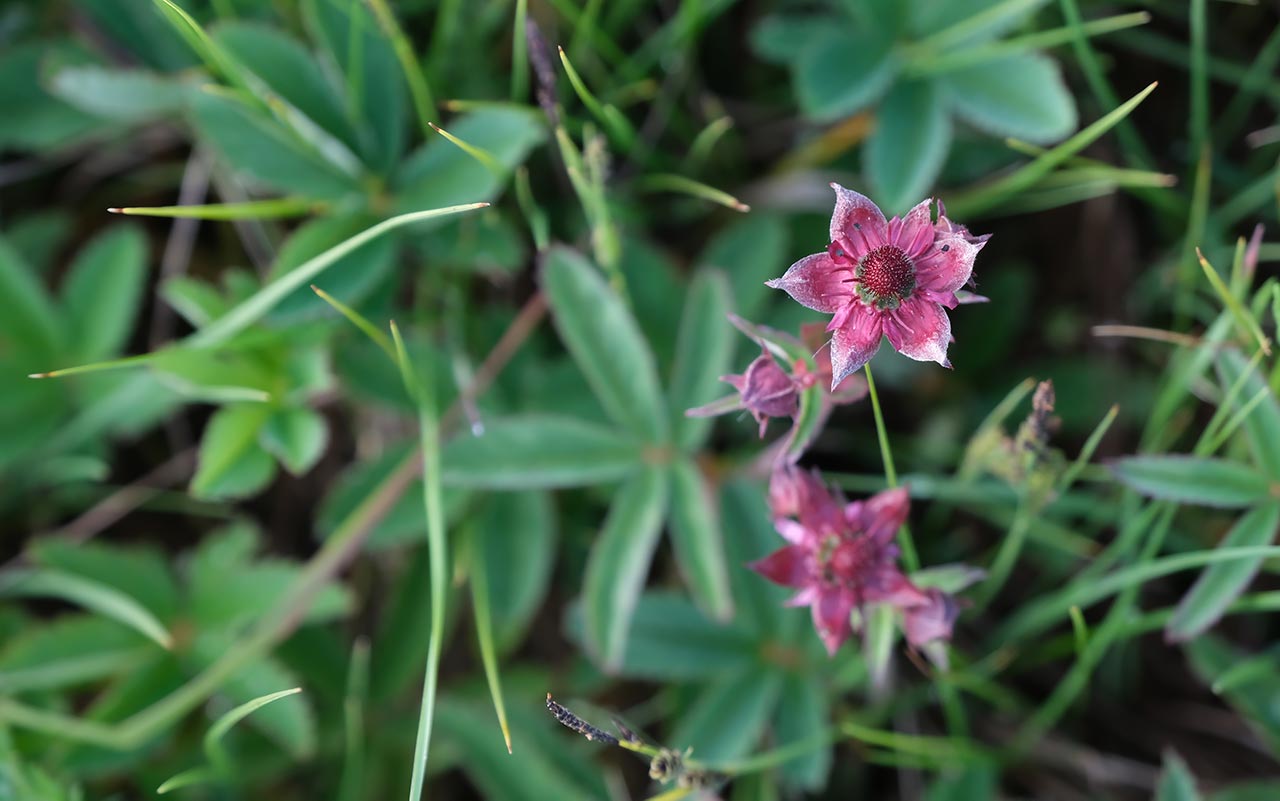Back dunes and inter-dune troughs

Dune heathland north of the hotel.
Photo: Espen Mills
What is an inter-dune trough?
Inter-dune troughs were probably formed in places where especially strong winds have blown the dune sand away to form sunken cavities and depressions. In autumn and winter these fill with rainwater to form pools. Such troughs are also found further south along Solastranden, but the area north of the hotel is the best example in Norway.

An inter-dune trough.
Photo: Espen Mills
A rare bee
The maritime mason bee is one of Norway’s rarest bees. It lives only on coastal sand dune heathlands. It is found in only three places in Norway, and one of these is Solastranden. Maritime mason bees nest in tunnels that they dig in the sand, either in the marram grass belt or on other sandy areas that are free of vegetation. As many as 211 bee species have been recorded in Norway. The maritime mason bee is formally classified as ‘endangered’.

A maritime mason bee.
Photo: Arnstein Staverløkk – NINA
Take care of nature!
The best thing you can do to protect nature here at Solastranden is to follow the prepared and marked paths out onto the beach. This will help conserve the plant and animal life. Footfall is a major threat to the valuable habitats along the Jæren coast. The thin vegetation cover is easily broken up as we walk across it, and this can cause erosion. Please respect the fences and use the prepared paths so that the plants and animals can survive side by side with us.

Please keep to the paths.
Photo: Erik Thoring
Pipits singing above the heath
The meadow pipit is smaller than a skylark – and its song is not so loud. Otherwise, the two birds have a lot in common. Both thrive in the open Jæren landscapes, although the meadow pipit prefers the drier dune heathlands. It is common throughout Norway, but most numerous in the mountains. The meadow pipit is speckled brown with a grey-white belly, while the skylark has white, unstreaked underparts. Most migrate south in the autumn, but a few overwinter along the Jæren coast.

A meadow pipit.
Photo: Roy Mangersnes
The marsh cinquefoil – a medicinal plant
As its name suggests, this plant thrives in boggy and marshy areas. It is thus quite common in the wet, inter-dune troughs that you see in front of you. It is a perennial species that was used in medicine in the past. You can recognise it from its five reddish-coloured sepals growing from the top of stems that can be up to 50 centimetres high.
It is not permitted to pick flowers in the conservation area.

The marsh cinquefoil.
Photo: Erik Thoring